Diagnosing air conditioning (AC) issues in a Citroen C5 requires a systematic approach to identify the root cause. The AC system in a car is complex and involves various components that must work together for optimal performance. Here’s a step-by-step guide to help you diagnose and troubleshoot the AC problem in your Citroen C5.

Common issues that can impede the proper functioning of the air conditioning system in your Citroen C5 include a dirty cabin air filter, refrigerant leaks, clogged condenser, a dirty evaporator, a malfunctioning blower motor, a faulty compressor, issues with the blend door actuator, or any electrical system faults.
Dirty Cabin Air Filter:
A dirty or clogged cabin air filter can restrict airflow, reducing the efficiency of the AC system.

Regularly replacing the cabin air filter is essential for optimal performance and air quality inside the vehicle.
Video: Replacing cabin air filter in Citroen C5
Cleaning or replacing the pollen filter in your C5 doesn’t always require a visit to the workshop. You can easily access the filter by following a few straightforward steps, as demonstrated in the accompanying video.
Important Note: A dirty cabin air filter primarily contributes to diminished cooling performance. If you’re experiencing the issue of exclusively warm air emanating from the air vents in your C5, it is likely that the problem resides elsewhere in the AC system and may necessitate a more thorough diagnostic assessment.
Refrigerant Leak:
One common issue that can lead to AC failure is a refrigerant leak. Refrigerant is a crucial component in the AC system, responsible for cooling the air that circulates inside your vehicle.
Warm Airflow:
When your car’s AC is not blowing cold air as it should, it could be a sign of low refrigerant levels due to a leak.
Hissing Noise:
A noticeable hissing sound when the AC is running may indicate a refrigerant leak. This could be caused by the pressurized refrigerant escaping from the system.
Visible Refrigerant Stains:
Inspect the components of your AC system, including hoses, connections, and the compressor, for any signs of oily or stained residue. This could be a result of leaking refrigerant.
Ice Accumulation on Components:
Paradoxically, a refrigerant leak can sometimes cause ice to form on AC components. If you notice frost or ice buildup on the evaporator or refrigerant lines, it may be a sign of a leak.
Dirty or Clogged Condenser:
The condenser is responsible for releasing heat from the refrigerant. If it’s dirty or clogged, it can’t dissipate heat effectively, leading to reduced cooling performance.
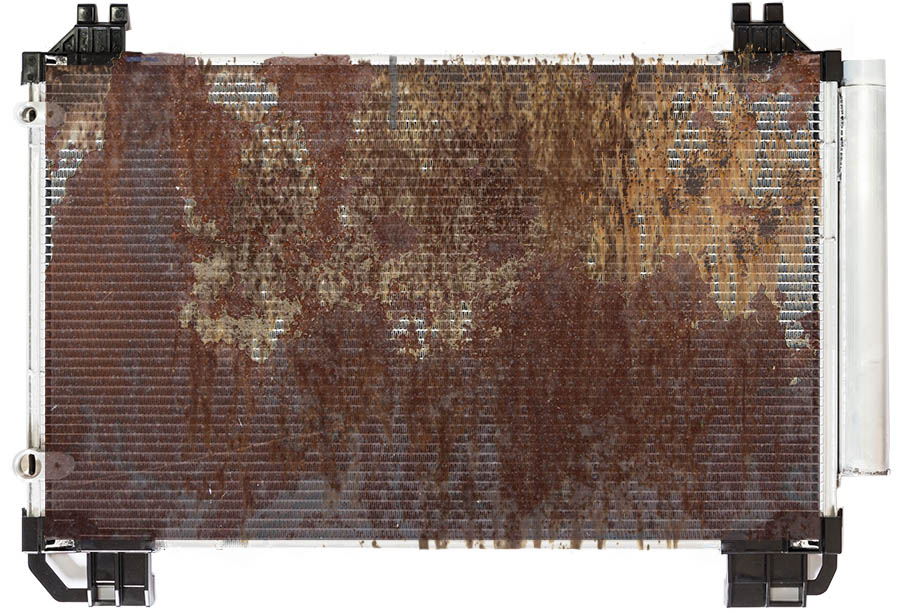
Regular cleaning or maintenance is necessary to keep the condenser in good condition.
Dirty or Clogged Evaporator:
The evaporator is responsible for absorbing heat from the air inside the car. If it’s dirty or clogged, it can hinder heat absorption and reduce cooling efficiency.
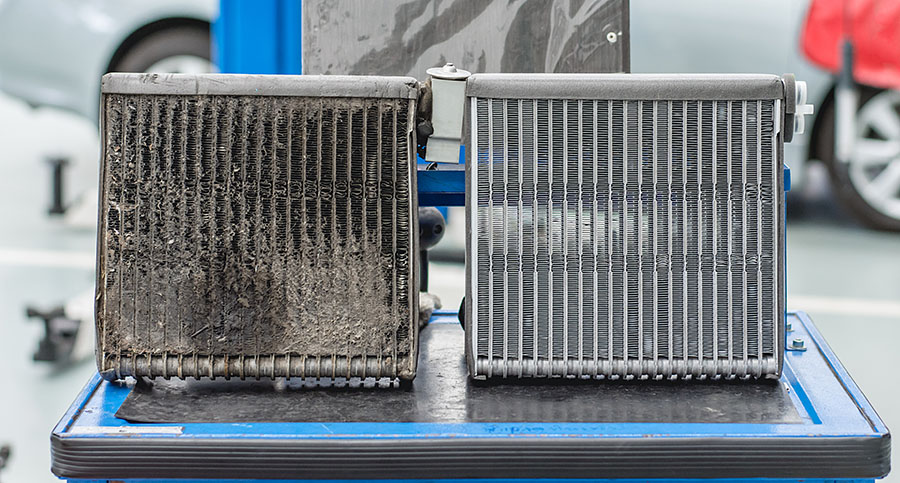
Cleaning or replacing the evaporator may be necessary.
Bad Blower Motor:
One of the key components of the AC system is the blower motor, responsible for circulating cool air throughout the interior.
When the blower motor malfunctions, it can lead to a lack of airflow, reduced cooling performance, and an uncomfortable driving experience.
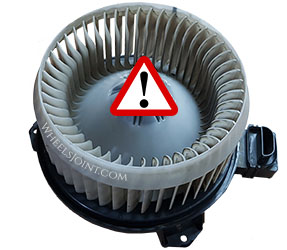
Weak Airflow
If you notice a significant reduction in the airflow coming from your car’s vents, it could indicate a problem with the blower motor.
No Air at All
Complete loss of airflow is a clear sign of a malfunctioning blower motor.
Strange Noises
Unusual sounds, such as squealing, rattling, or grinding, when you turn on the AC may indicate a problem with the blower motor’s bearings or other internal components.
Inconsistent Airflow
If the airflow is intermittent or varies in strength, the blower motor may be experiencing electrical issues.
Defective Compressor:
The AC compressor pressurizes the refrigerant and is vital for the entire cooling process. If the compressor is defective or fails to engage, the AC system won’t function properly.
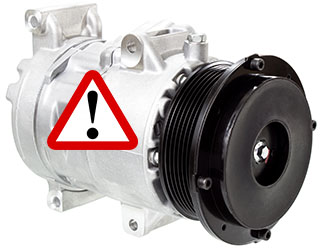
Warm Air Blowing from Vents
One of the primary indications of a faulty compressor is warm air instead of cool air coming from the AC vents. This suggests that the refrigerant isn’t being compressed and circulated properly.
AC Clutch Not Engaging
The AC compressor is typically equipped with a clutch that engages and disengages to control the cooling process. If the clutch isn’t engaging, it can prevent the compressor from functioning correctly.
Lack of Lubrication
Compressors require proper lubrication to function smoothly. Lack of lubrication due to low refrigerant levels or oil leaks can lead to compressor failure.
Electrical Issues
Problems with the electrical components, such as a malfunctioning clutch, wiring issues, or a faulty relay, can hinder the compressor’s operation.
Contaminants in the System
Contaminants, such as dirt or debris, can enter the AC system and damage the compressor. Regular maintenance, including changing the AC filter, can help prevent this.
Faulty Blend Door Actuator:
A malfunctioning air conditioning (AC) system can be a major inconvenience, especially during hot summer months. One common issue that can lead to a loss of climate control in your vehicle is a faulty blend door actuator.
The blend door actuator is a crucial component in regulating the flow of hot and cold air through the HVAC system, determining the temperature inside the cabin.
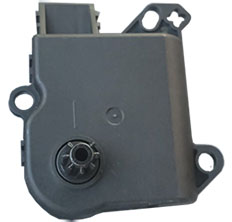
Inconsistent Temperature Output:
One of the primary signs of a malfunctioning blend door actuator is the inability to maintain a consistent temperature inside the vehicle. You may experience sudden changes in the air temperature, ranging from warm to cold or vice versa, even if you haven’t adjusted the controls.
Unresponsive Temperature Controls:
If you find that adjusting the temperature controls on your AC system doesn’t result in any noticeable changes in the cabin temperature, it could indicate a problem with the blend door actuator.
Strange Clicking Noises:
A clicking sound coming from the dashboard when you adjust the temperature settings is a common indicator of a failing blend door actuator. The noise is often caused by a stripped gear within the actuator.
Electrical System Faults:
Various electrical components, including relays, switches, and sensors, play a crucial role in the AC system’s operation. Faulty electrical components can disrupt the system. Thoroughly inspecting and testing these components is essential for identifying and rectifying electrical issues.
Regular maintenance and prompt attention to any issues can help ensure the smooth operation of the air conditioning system in a Citroen C5. If troubleshooting becomes challenging or if multiple issues are suspected, seeking professional assistance from a qualified mechanic or automotive service center is recommended.









